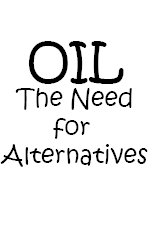 According to a Scientific American article from September 12, 2008:
According to a Scientific American article from September 12, 2008:
In fact, oil companies have yet to take advantage of the nearly 86 billion barrels of offshore oil in areas already available for leasing and development. So why are they chomping at the drill bit to open up the moratorium waters and survey them anew?
“Oil company stocks are valued in large part based on how much proved reserves they have,” says Robert Kaufman, an expert on world oil markets and director of Boston University’s Center for Energy and Environmental Studies. Translation: just having more promising leases in hand would be worth billions of dollars.
As for reducing the price of oil:
Even by 2030, offshore drilling would not have a significant impact on oil prices, according to Martin, because oil prices are determined on the global market. “The amount of total production anticipated—around 200,000 barrels a day—would be less than 1 percent of the total projected international consumption.”
I found this even more interesting quote from Kaufman in the Scientific American article:
“At its peak in production, which occurred in 1970s, the U.S. produced about 10 million [barrels of oil] a day,” Kaufman says. “Now, after 30 years of fairly steady decline, we produce about five million barrels a day,” whereas we consume 20 million barrels daily. “Whoever talks about oil independence has to tell a story about how we close a 15-million-barrel gap.”
Not even all Republican’s are for off-shore drilling. I found this interesting quote from Arnold Schwarzenegger (Gov. of California) in a U.S. News article from Sept. 13, 2008:
Schwarzenegger was quick to acknowledge that the high cost of gasoline, which is selling for an average of $4.58 a gallon in the state, is taking a toll on California even more than other states. Recent national polls show as many as 67 percent of voters believe offshore drilling is a good solution. But Schwarzenegger today threw his support behind conservation and alternative fuels, instead. “We are in this situation because of our dependence on traditional petroleum-based oil,” Schwarzenegger said. “The direction our nation needs to go in, and where California is already headed, is toward greater innovation in new technologies and new fuel choices for consumers. That is the way we will ultimately reduce fuel costs and also protect our environment.”
What can I say but that I also believe that this is the direction that this country should be going in. Energy experts believe that we’ve pretty much achieved peak oil, meaning that the oil that we can get is no longer going to outpace demand no matter what we do. There will always be needs for oil and if we don’t reduce our dependence on oil and find alternatives for many of the oil-based products and uses that we have now we are going to run out. The only question is how much longer do we have. It’s also a given that as oil fields are emptied the places where we can get oil are going to require methods that are dirtier and harder on the environment than the present methods — and global warming is not going to get any less global or warm if we increase our pollution of the atmosphere.
Folks we need to find alternatives — no matter what the politicians say, there are no easy answers and off-shore drilling is not an answer at all. At best, it’s a way of making it sound like they’re doing something for us to reduce cost but it will only line the pockets of the oil companies and in the long run it is going to cost all of us citizens and people of the planet Earth big-time. We need to begin to look at alternatives and ways to reduce our reliance on oil.
I know everyone laughed when Obama suggested that every American keep his or her tires inflated to the proper level. Yeah, funny wasn’t it. However, it does increase your miles per gallon. Not a lot, true but if every car in American was running on tires that were properly inflated that little tiny bit for every car on the road can reduce the amount of gas used overall by a significant amount. It may not help you personally all that much; maybe a few dollars a week at the pump, but it helps the country. There are many other little things that can be done to help your mileage and if everyone did them it would help the country.
Why do we laugh? Because it’s not a single magic bullet? Probably. Most people want the problem taken care of without them having to do anything different. They want life to go on and all the problems to be fixed with no input or change in their own behavior. Sorry, life isn’t like that. It never was. You have to all work together.
So, I know you’re wondering what have I done. Well, we make sure that the car is empty (we don’t carry extra weight if we don’t have to). Our tires pressure is checked regularly, and we make sure we have tread on them too. We plan trips to work in a circle to reduce back and forth driving. During the week, my husband goes to work and stops at the post office and/or store on his way home as both are on his travel route. I work at home. Our weekend shopping includes in a loop: dropping off the recycling, stopping at the post office (if needed), getting groceries (two stores), and returning home. Occasionally, we add a stop or two on the loop if necessary. If a doctor visit is needed mid-week, we plan to take care of any other stops along that route so we don’t need to drive it again. We’ve been doing this for years and there really isn’t any way to reduce the number of miles traveled in a month. Twice a month we go to a social event and while we try to match that with other tasks, we often can’t but we don’t want to give up this group either (I mean we really need some fun in our lives too.) We also have a Honda and based on our calculations of number of gallons purchased versus number of miles driven — we get 28 miles per gallon and we don’t yet have a hybrid but we’re saving for one.
These are simple things that can be done. They’re simple things anyone can do. It takes advanced planning and may seem difficult at times but you get used to it and the planning gets easier and finally becomes second nature.
 Just to recap the top of the post on oil drilling. If drilling is allowed off the coast or in the refuge in Alaska:
Just to recap the top of the post on oil drilling. If drilling is allowed off the coast or in the refuge in Alaska:
- The oil companies already own leases on millions of acres that they’ve never bothered to even look at.
- Not one drop of oil could be produced for at least 10 years. The oil companies have admitted that they don’t have the equipment or crews to even start exploiting any new sites.
- Once oil did start flowing, it would be years more until any appreciable flow could be retrieved.
- The amount of oil extracted, even at peak, will be such a small percentage of the total world oil market that it will have no effect whatsoever on prices.
- ANWR is estimated to contain 7 billion barrels of oil … total. Since America consumes about 20 million barrels a day, that means Alaska has enough to supply the U.S. with oil for ONE year.
- How much is offshore? That’s unknown, but the guess is about 18 billion barrels. Enough to supply the U.S. for two more years.
- So will drilling make us self-sufficient. Sure … for three years … maximum.
- Will the oil be used to fuel America? Maybe. The oil pumped belongs to the oil companies. They can sell it to whomever is willing to pay the highest price. Maybe that’s the U.S., maybe it’s China. That’ the beauty and terror of a free market.
- So, who really benefits from new drilling? The oil companies, and only the oil companies.
- Oh, and who pays for clean up if the new drilling causes an ecological disaster? The tax payers.
And what sets the price of oil? Speculation (using the English definition, not the economic one). Russia MIGHT cut off oil: Price goes up. A hurricane MIGHT interfere with oil platforms in the gulf: Price goes up. Iran MIGHT cause problems in the Gulf of Hormuz: Price goes up. Things don’t really go wrong for a while: Price goes down … slowly.
Why isn’t the price of oil based on the cost of pumping it out of the ground, refining it, and transporting it? Actually, I haven’t got a clue. It’s all part of the consensual hallucination we call economics. Why isn’t the price of a house based on the lumber, bricks, nails, etc that went into building it? It’s all a mystery to me. I think if anybody actually tried to make sense of the market, the whole thing would come crashing down on us. We’re the emperor with a new set of clothes. Heck, if I balanced my home accounts the way the Fortune 500 balances their books … I’d be in sent to jail.
 Tonight we watched An Inconvenient Truth on DVD. We’d been meaning to for a while since we’ve heard so much about it — for and against.
Tonight we watched An Inconvenient Truth on DVD. We’d been meaning to for a while since we’ve heard so much about it — for and against.

 Normally, I don’t pass these things on because I don’t really know where they came from. This one is different, it’s from the daughter of friend. My friend rewrote it so it could be posted and sent to others. Read and ponder, and if you can do something to help, please do so. Evidently, FEMA didn’t learn from the aftermath of Katrina and now Houston is in the same fix.
Normally, I don’t pass these things on because I don’t really know where they came from. This one is different, it’s from the daughter of friend. My friend rewrote it so it could be posted and sent to others. Read and ponder, and if you can do something to help, please do so. Evidently, FEMA didn’t learn from the aftermath of Katrina and now Houston is in the same fix. According to a
According to a  Just to recap the top of the post on oil drilling. If drilling is allowed off the coast or in the refuge in Alaska:
Just to recap the top of the post on oil drilling. If drilling is allowed off the coast or in the refuge in Alaska:





